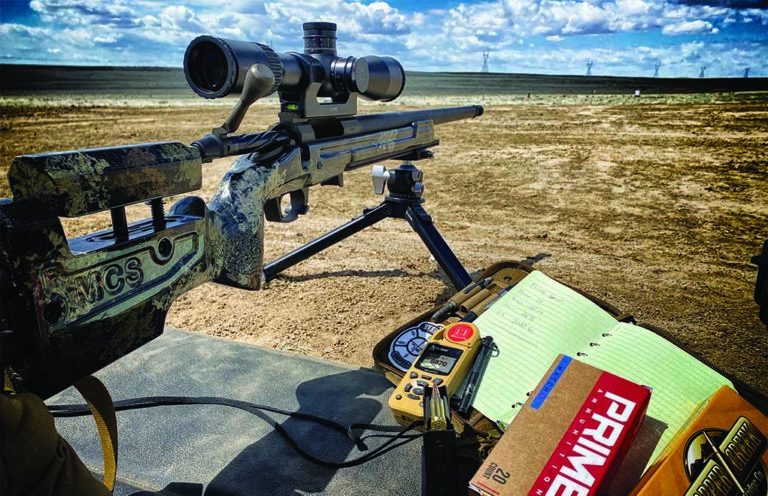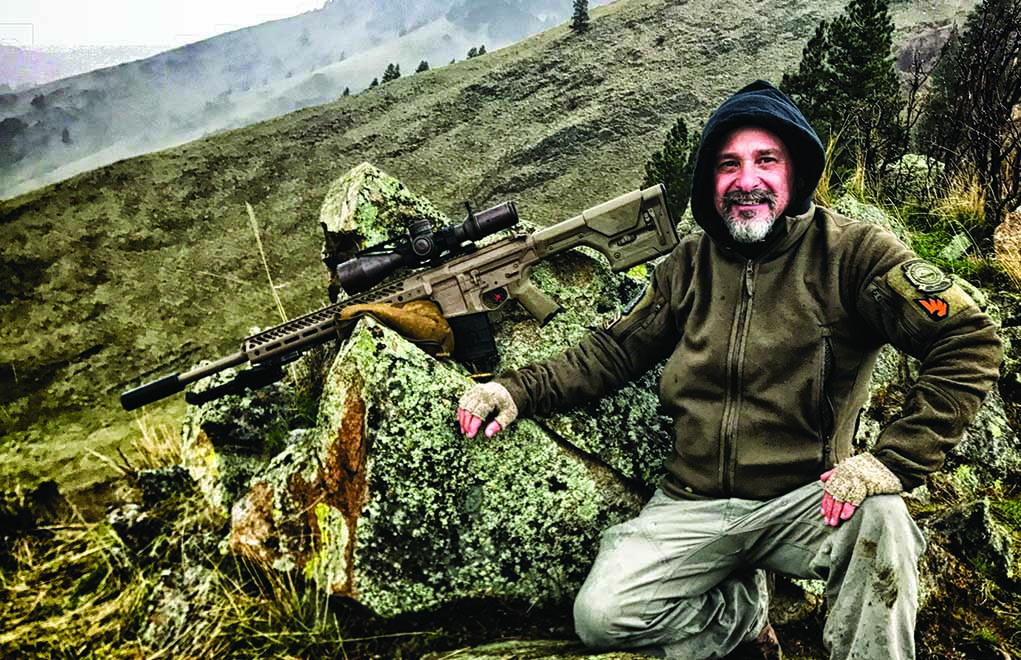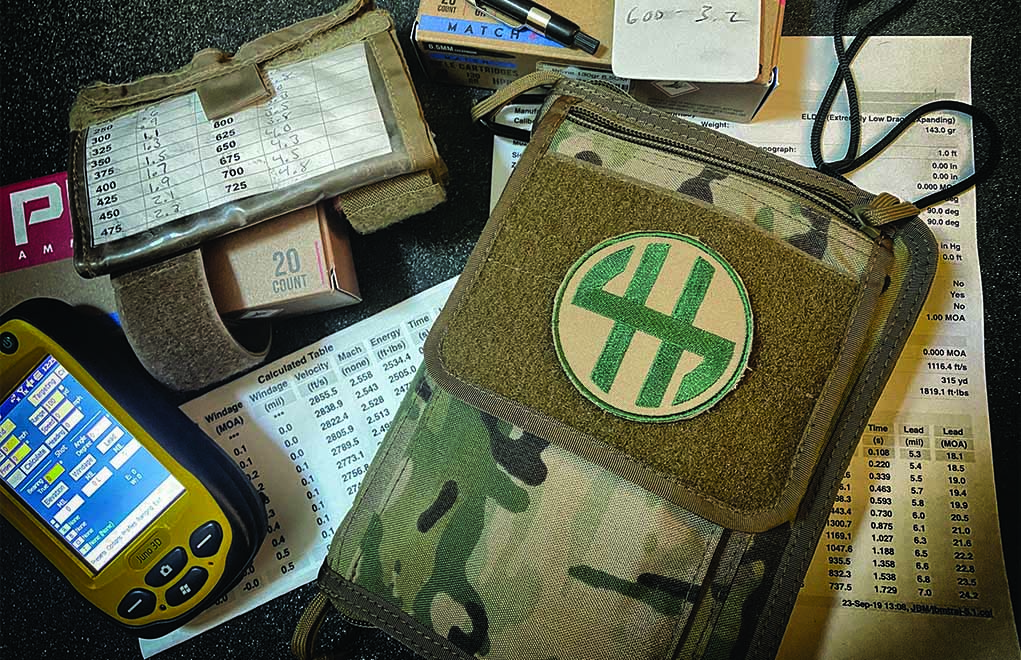
What's a legacy skill? Simply the foundational methods of precision shooting. Master them and you'll have a leg up in the long-range game.
In terms of training, we talk about “legacy skills” all the time. To me, legacy skills are the tools that enhance the shooter’s overall proficiency while not being dependent on gear. In other words: You’re solving your precision rifle problem without having to dip into your wallet.
It boils down to training and mindset. Do you invest in a ballistic calculator for your latest smartphone, or will a data book work?
Reticle Ranging
One example from a sniper’s standpoint is reticle ranging. Reticle ranging is a legacy skill because it’s:
- Slow in a game where speed wins
- Limited in its maximum effective range
- Subjective in execution
- Results will vary with conditions
- It’s a perishable skill set

Today, the military uses tools to help when reticle ranging is necessary. Its members practice “rapid target engagements” with their system that translate directly to their reticle. It’s different from my days in the Marine Corps, but it accomplishes the same thing; it just cuts out a few steps.
Reticle ranging is subject to light, angle, target size and color. There’s a host of variables that can skew the results, so we have to practice. It’s a perishable skill that requires sustainment training. When you need it, you want it to be there, so practice is the only choice. The formulas are all over the Internet, but honestly, you use them to create a “cheat sheet.” They’re not for in the field, because they’re too slow. The idea that you can break out a calculator under stress or time is a non-starter. We adapt and practice to speed up the process.
Slings
Slings are another area we consider a legacy skill. It’s one thing to sling up a 7-pound rifle with a 3-9x scope. It’s an entirely different process to shoot an 18-pound Accuracy International with a sling under time with any kind of success. The amount of training necessary would be self-defeating: Our precision rifles have to be supported. Can it be done? Absolutely. But it’s wildly inconsistent without training.
Ask yourself this: Do I want to stand up in the middle of a field and set up a sling? For me? No. I look at things such as cover and concealment, so my first consideration is rifle support.
While re-reading an older article I wrote, I spoke passionately about carrying a tripod. Legacy skills mean I have a tool in my toolbox when all else fails; I have a plan, along with the ability to execute. My skills are up the task without outside influence. It’s not a dollar issue; it’s one of time and training.

Sling shooting is beneficial when practiced. But understand the time it takes to build the position and adjust the natural point of aim. I know for a fact that I can deploy a bag or tripod faster. The question becomes, What happens when I don’t have my backpack or tripod?
We shot off of packs in the Marines, because we didn’t have bipods. Slings were necessary for both general qualifying and sniping. A sling can do more than just hold the rifle on your shoulder—but, you have to train.
Get On Target With Frank Galli:
- Mils vs. MOA: Which Is The Best Long-Range Language?
- Buying the Perfect Precision Scope
- Shooting Positions: Variety Is The Spice Of Life
- Riflescope Tracking: Why It’s Crucial To Test It
- Long-Range Shooting: Becoming Your Own Spotter
Data Books
Ballistic apps/solvers are all the rage. We see new owners buying apps before they even hit the range or own a rifle. Because these apps reside on our phone, many look at them as if they were games—as opposed to the military-grade tools they actually are.
We’ve lost an essential connection to our data by depending on apps. We remember more when we write things down instead of inputting it into the phone. Defaulting to a smartphone to manage all your ballistic calculations creates a “dope disconnect.”
Back in the day, we all had to memorize phone numbers; this was pretty easy, because we manually inputted them every time. Today, we tap the icon or pick a name out of a list, and the phone does the rest.
Our data books are a shooter’s “bible.” We used to have one for every rifle we owned. We were meticulous about monitoring everything— from round count to range details. In fact, I have a retired data book with more information from places such as Gunsite that are still valid today. None of them can be found in any of my apps. It’s more than dope: The targets are plotted out and have yet to be moved.
Data books are crucial for analysis, damage control and barrel conditioning. It’s beyond just serving as a dope book. Fill your data book with any number of true statements, and there’s nothing you can’t accomplish. I love the variety of pages we have (thanks to people such as Tony at Impact Data Books!). To this day, I still use a data book—despite owning every, single ballistic app on the market. In fact, I’d break out a data book before I’d open my phone on the firing line.
Positional Shooting
There’s a long list of legacy skills out there; some of them are discipline-specific.

One area that’s easy and combines multiple legacy skills is positional shooting. Today, we try to support the rifle off props. Practicing positions with a sling accomplish two things: You learn to manage the fundamentals from alternate positions, and you can work slings and body positions to stabilize the shots.
Working positions is only limited by time. You don’t need a barricade or a tank trap. You can do it in an empty field. Follow the crawl. Walk and then run the model, making sure your execution is perfect. Take the time to analyze and fine-tune each step of the process. It’s not so much when you’re sitting slung up; it’s more about getting into and out of the position quickly and effectively.
For instance, in a NASCAR race, the problem isn’t the straightaway—it’s the turns (where do you enter each turn, and where do you get back on the gas?).
It’s about being a well-rounded marksman. We have plenty of shortcuts in our lives. Look at your shooting as if it were a martial art and master the craft before turning to the tips and tricks. Those will come later.
I want to “own” everything in front of me out to 600 meters, 800 meters, 1,000 yards! Whatever the case, practice makes perfect.
Editor's Note: This article originally appeared in the July 2020 issue of Gun Digest the Magazine.

Next Step: Get your FREE Printable Target Pack
Enhance your shooting precision with our 62 MOA Targets, perfect for rifles and handguns. Crafted in collaboration with Storm Tactical for accuracy and versatility.
Subscribe to the Gun Digest email newsletter and get your downloadable target pack sent straight to your inbox. Stay updated with the latest firearms info in the industry.

![Best Concealed Carry Guns In 2025 [Field Tested] Wilson Combat EDC X9S 1](https://gundigest.com/wp-content/uploads/Wilson-Combat-EDC-X9S-1-324x160.jpg)


![Best 9mm Carbine: Affordable PCCs [Tested] Ruger Carbine Shooting](https://gundigest.com/wp-content/uploads/Ruger-Carbine-Shooting-100x70.jpg)
![Best AR-15: Top Options Available Today [Field Tested] Harrington and Richardson PSA XM177E2 feature](https://gundigest.com/wp-content/uploads/Harrington-and-Richardson-PSA-XM177E2-feature-100x70.jpg)
